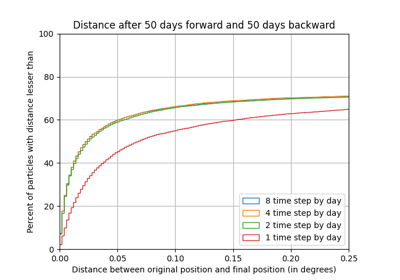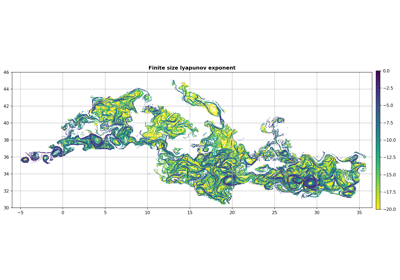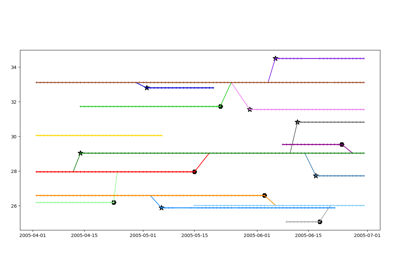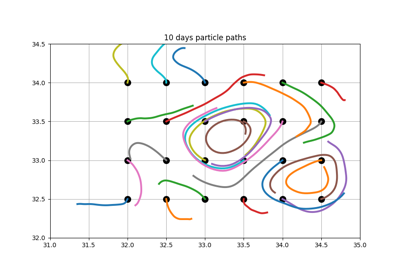py_eddy_tracker.dataset.grid.GridCollection¶
- class py_eddy_tracker.dataset.grid.GridCollection[source]¶
Bases:
objectMethods
At each call it will update position in place with u & v field
Produce filament with concatenation of advection
Compute z over lons, lats
At each call it will update position in place with u & v field
Add next file to the list and remove the oldest
Attributes
- advect(x, y, t_init, mask_particule=None, nb_step=10, time_step=600, rk4=True, reset_grid=None, **kw)[source]¶
At each call it will update position in place with u & v field
- Parameters:
x (array) – Longitude of obs to move
y (array) – Latitude of obs to move
t_init (float) – time to start advection
mask_particule (array,None) – advect only i mask is True
nb_step (int) – Number of iteration before to release data
time_step (int) – Number of second for each advection
rk4 (bool) – Use rk4 algorithm instead of finite difference
reset_grid (int) – Delete all loaded data in cube if there are more than N grid loaded
- Returns:
t,x,y position
- property are_loaded¶
- filament(x, y, u_name, v_name, t_init, nb_step=10, time_step=600, filament_size=6, rk4=True, **kw)[source]¶
Produce filament with concatenation of advection
- Parameters:
x (array) – Longitude of obs to move
y (array) – Latitude of obs to move
u_name (str,array) – U field to advect obs
v_name (str,array) – V field to advect obs
nb_step (int) – Number of iteration before to release data
time_step (int) – Number of second for each advection
filament_size (int) – Number of point by filament
- Returns:
x,y for a line
- classmethod from_netcdf_list(filenames, t, x_name, y_name, indexs=None, heigth=None, **kwargs)[source]¶
- path(x0, y0, *args, nb_time=2, **kwargs)[source]¶
At each call it will update position in place with u & v field
- Parameters:
x0 (array) – Longitude of obs to move
y0 (array) – Latitude of obs to move
nb_time (int) – Number of iteration for particle
kwargs (dict) – look at
GridCollection.advect()
- Returns:
t,x,y
- property period¶
- shift_files(t, filename, heigth=None, **rgd_kwargs)[source]¶
Add next file to the list and remove the oldest
- property time¶



